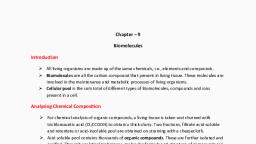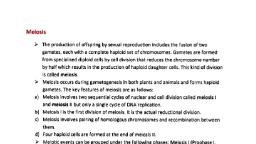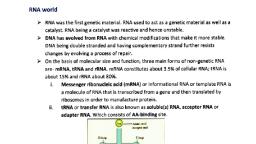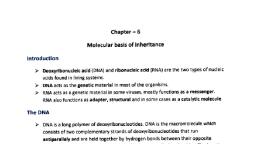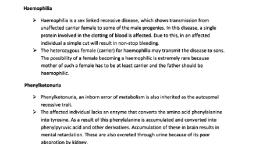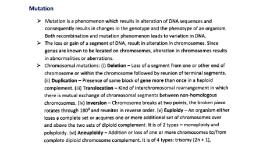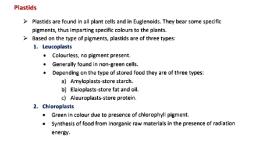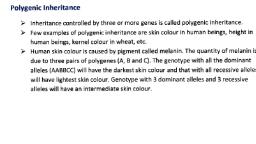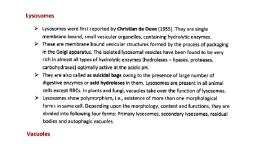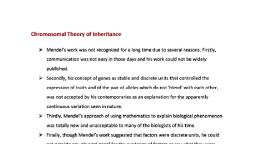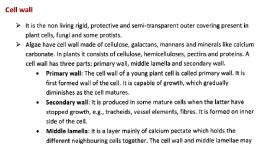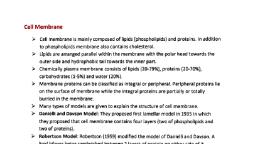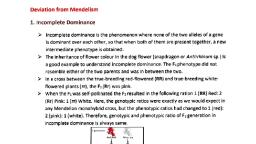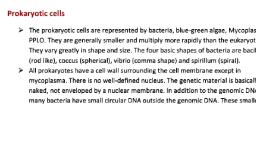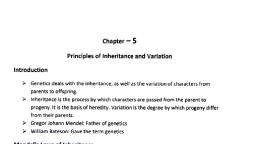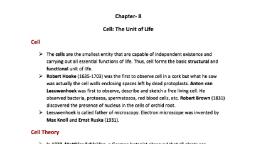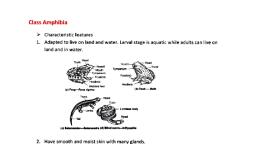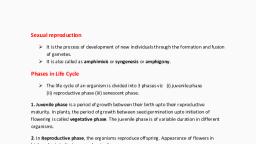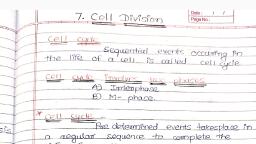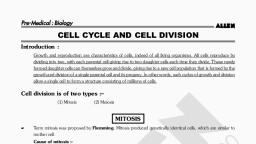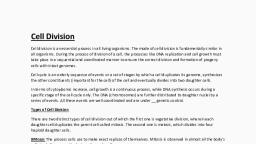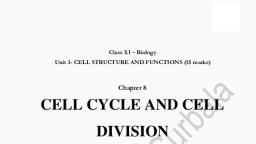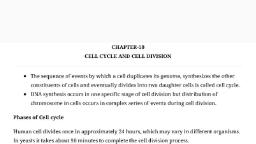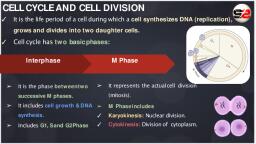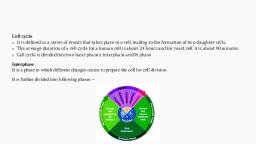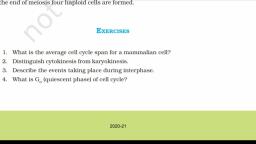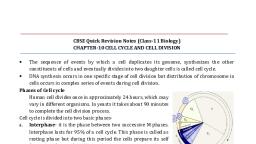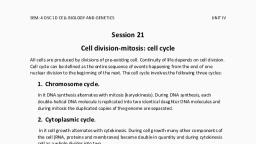Page 1 :
Chapter- 10, Cell cycle and Cell division, Introduction, All living organisms start their life from a single cell. Growth and reproduction are, characteristics of all cells and all living organisms. Each parental cell divides and gives, rise to two daughter cells. These newly formed daughter cells can themselves grow, and divide, giving rise to a new cell population that is formed by the growth and, division of a single parental cell and its progeny., , Cell cycle, Cell division is a very important process in all living organisms. During the division of, a cell, DNA replication and cell growth also takes place. Cell division, cell growth and, DNA replication have to take place in a coordinated way to ensure correct division, and formation of progeny cells containing intact, , genomes, , The sequence of events by which a cell duplicates its genome, synthesises the other, constituents of the cell and eventually divides into two daughter cells is termed cell, , cycle, , During cell division, replicated chromosomes (DNA) are distributed to daughter, nuclei by a complex series of events. These events are under the genetic control., , Phases of Cell cycle, Atypical eukaryotic cell cycle is illustrated by human cells in culture. Time period of, cell cycle varies from organism to organism and also from cell type to cell type. Yeast, , can progress through the cell cycle in only about 90 minutes., The cell cycle is divided into two main phases: (i) Interphase and (ii) M phase (mitosis, , phase)., (i) Interphase: It is the phase between two successive M phases. The interphase is called the, resting phase. The interphase lasts more than 95% of the duration of cell cycle. In this, phase, the cell prepares for division by undergoing both cell growth and DNA replication in, an, , orderly manner. The interphase is divided, , into three, , phases, , a) G1(Gap 1) phase: G1phase corresponds to the interval between mitosis and, initiation of DNA replication. During this phase the cell is metabolically active and, continuously grows but does not replicate its DNA., b) s(Synthesis) phase: S phase marks the period during which DNA synthesis or, replication takes place. During this time the amount of DNA per cell doubles. But, , there is no increase in the number of chromosomes. In animal cells, during the S
Page 2 :
phase, DNA replication begins in the nucleus, and the centriole duplicates in the, , cytoplasm., c)G2(Gap 2) phase: Final preparation of M-phase occurs during this phase. In G2phase,, proteins are synthesised in preparation for mitosis while cell growth continues., , Fig.: A diagrammatic view of cell cycle indicating formation of two cells from one cell, , Interphase is the longest and very active phase of cell cycle., During G1 phase cell synthesises different types of RNA and proteins., Quiescent stage (Go): Some cells in the adult animals do not appear to exhibit, division, e.g. heart cells and many others divide only occasionally, as needed to, , replace cells that have been lost because of injury or cell death. These cels do not, divide further, they exit G1phase to enter an inactive stage called quiescent stage, (Go) of the cell cycle. Cells in this stage remain metabolically active but no longer, proliferate unless called on to do so depending on the requirement of the organism., (1) M phase (Mitosis phase);: M phase represents the phase when actual cell division o, mitosis occurs. The M phase starts with the nuclear divisions, corresponding to the, , separation of daughter chromosomes (karyokinesis) and usually ends with division of, cytoplasm (cytokinesis)., I n animals mitotic cell division is only seen in the diploid somatic cells. Plants shoe, mitotic division in both haploid and diploid cells.

